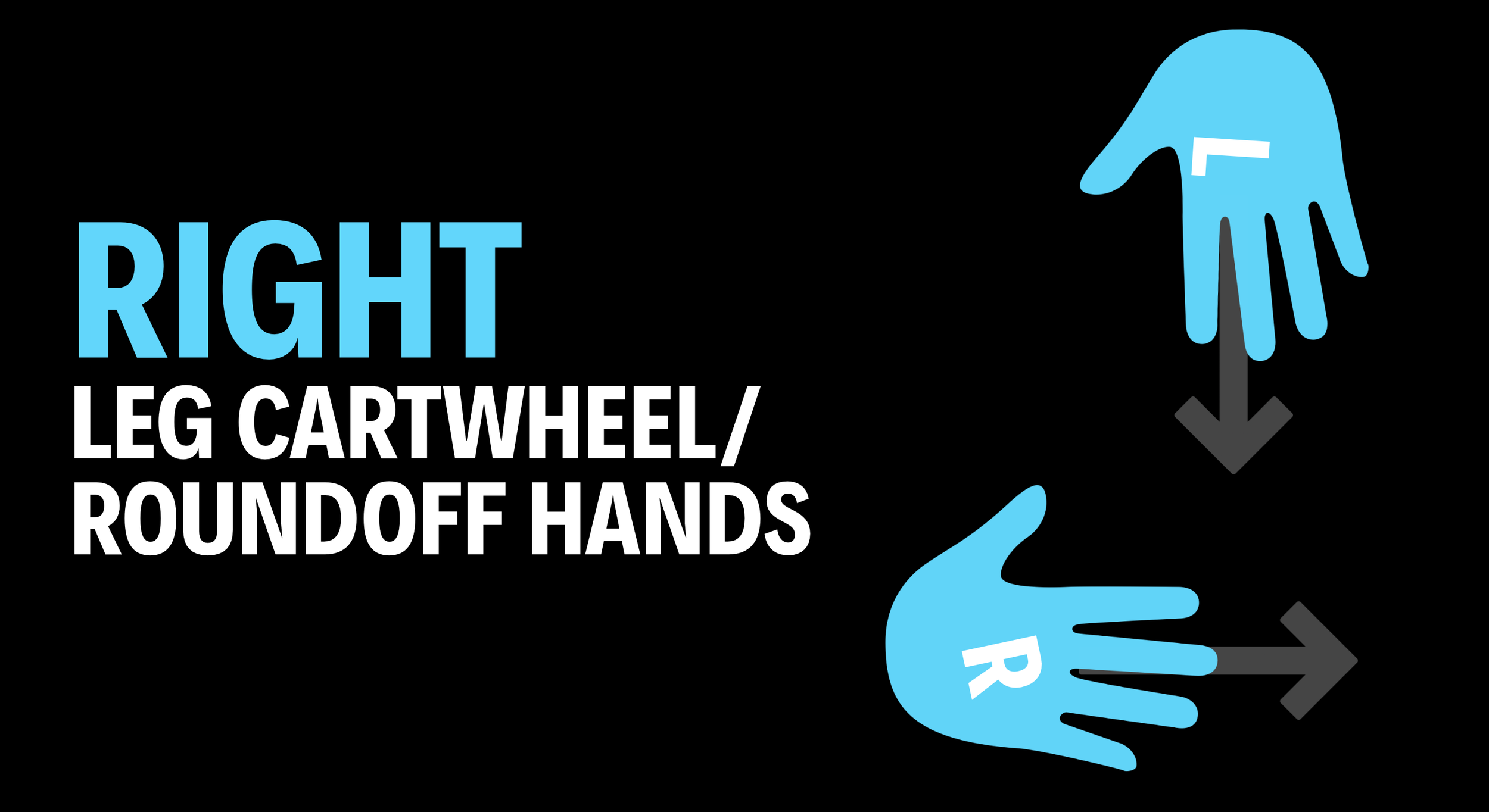Your connection to the floor defines your power off it.
Tumbling begins at your fingertips — literally. Where, how, and when your hands touch the ground can be the difference between a clean pass and a collapsed skill.
Why Hand Placement Matters
Proper hand placement affects:
Direction and line of travel
Body alignment and balance
Rotation timing
Rebound and snap-down
Safety and injury prevention
Cartwheels & Round-Offs
First hand: Side-facing (perpendicular to your body)
Second hand: Rotated inward (creates a “T” or L-shape between both hands)
Fingers spread wide, pressing into the floor
Hands shoulder-width apart
Palms flat, wrists strong
Handstands & Back Handsprings
Hands: Shoulder-width apart and slightly turned inward
Fingers: Open, fingertips pressing firmly into the ground for balance
Palms: Flat on the ground, pressing through the fingertips for extra support
Shoulders: Actively shrugged to stay stacked and protect the joints
Chest: Engaged and lifted to maintain body alignment
Common Mistakes
Hands too close or too wide
Collapsed wrists or bent elbows
Inconsistent hand shapes between repetitions
Coaching Tip
Film side and front views to assess consistency. Practice stationary handstands with correct placement to reinforce alignment.


